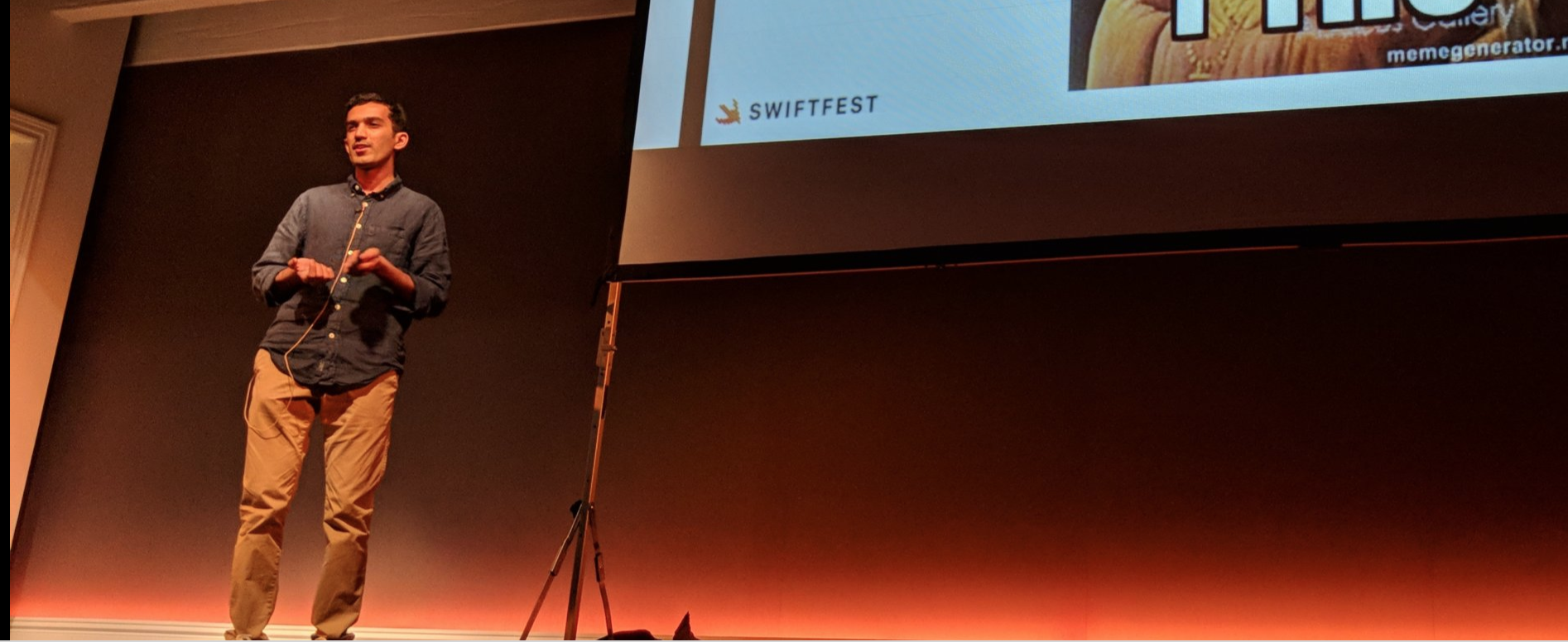Speaking at Technical Conferences

How many of you dread public speaking? If you're like me, of course, you do. However, the important thing is to overcome that fear and start somewhere. This year, I made a resolution to get started with public speaking at technical conferences and that's been going pretty well so far.
My initial goal wasn't like speaking at a fixed number of conferences but it was about polishing my talk content, come up with effective topics and try to work on the presentation skills.
My goal in writing this post is to share my thoughts and experiences with people who are eager to be public speakers at some point.
Why?
The reason I like to do public speaking is that I see it as a way to distribute my knowledge to other people and the secondary goal is to overcome the fear of public speaking and improve presentation skills.
What's the point of having all the knowledge in the world if you cannot share it with someone? speaking at technical conferences is the best way to achieve that goal. That's why at the beginning of the year 2018 I decided to start work on presentation skills, practice and deliver it to the audience. Working on presentation is also good because if I decide to deliver a talk on any topic, that motivates me to dig into it and research profoundly into it which also improved my own skill set in that subject.
Applying through CFPs
Call for Papers or as everyone else calls them "CFP" is the first step to apply at conferences for new speakers. Of course, if you already have given previous talks, or are a well-known figure in the community, you get a direct invite to speak at conferences. In that case, you don't have to apply and wait for organizers' acceptance for selection.
Creating CFPs could be a challenging task for new people. But for most CFPs, instructions are clear and they already mention what do add and what is advised not to add in the presentation.
If organizers are nice, they will even give you a feedback and opportunity to submit another version if the first version does not meet standards and needs an update.
If CFP is approved, you will get an email from organizers with the further details to get prepared for talk and the conference.
Making a presentation
Making a presentation is next step. For me, it's more like a task with high inertia before I start working on the actual content and slides. There are various tools you can use to make delightful presentation slides. I use Keynote and MS PowerPoint. Some power users also use Deckset which is a choice for many people giving presentations these days.
You want to make a presentation that is less clumsy, provides value, does not put the audience to sleep and is clean. The goal here is to not overwhelm the audience with a barrage of text, but try to add few hints and pointers and expand them through speaker's notes or directly through your speaking.
Once you make a presentation, get it reviewed by other people on your team to make sure content is correct, easy to understand and provides the value of organizers and target audience. If you are going to the conference on the behalf of your employer, you might also want to get it reviewed by your HR department and public relations team
Practice, practice, and practice
Practice is one of the most important factors when it comes to delivering a successful presentation. No matter how fluent and knowledgeable you are on the topic you are presenting, having to present it impromptu without any practice will lead to disastrous effects.
The way I see it when conference organizers give you chance to speak at their conferences, it's your job to make it as good as possible. By doing that you're giving organizers and audience the worth of their money and time attending your talk.
Practice in front of your family, friends, colleagues or even your team to get some confidence talking in front of large crowd if you haven't done so before.
Practicing also helps you to read presentation like the back of your hand and can make you comfortable with what's coming next. This can be helpful if for some reason you're unable to see slide content or speaker's notes during the presentation.
Practice will give you an opportunity to get feedback from other people and apply towards future presentations. Never think that practice is a waste of time. The more practice you do, more comfortable you will get with presentation and delivery of your thoughts
Delivering presentations
And finally that day comes when you have to present in front of the crowd. Congratulations! You're now ready to speak and deliver your thoughts and experience to large crowd.
Before you actually make a delivery, make sure to check all the pieces of equipment and settings you are expecting. If the screen at conference venue offers different aspect ratio that you're used to, you might also want to check that up and fix slides if that is applicable. Communicate with conference organizers if you have special requirements that can be fulfilled at least a day before the presentation date.
Personally, I also like to stand on the stage before the presentation for a few minutes, get and cherish that feeling. It doesn't matter how many people you're addressing, all that matters is how comfortable you're on the stage while addressing the crowd.
At the stage you will find that those hours and hours of practice sessions finally paid off and now you're the most confident person in the room.
If you feel comfortable, I would also suggest using wireless presenter to change slides remotely so that you don't have to stand near your laptop all the time. You can get one easily from Amazon. Most of the conference organizers also provide this in addition to the microphone. In any case, you want to get these things clear from conference organizers too.
While delivering a presentation, try to move around the room, make a regular eye-contact with different parts of the audience and speak slowly. It's also beneficial to keep a bottle of water with you in case it's a long-running presentation and you need a sip of water.
Finally, don't feel scared to take initiative to give a talk and represent yourself in front of other people. Initially, you might get lots of rejection during the CFP stage, but don't feel disappointed. Every time you get the rejection, contact the organizers for reason of rejection, and next time try to submit a better proposal.
You've not alone in this endeavour. Your friends, colleagues and team members will support you at every step of the preparation. Last thing, it's not unusual to have stage fright. But more you practice and more you do public speaking act, you will eventually overcome it.
If you have any more questions about this blog post or you're one of those people who are excited about giving public talks and need an advice, feel free to hit me up on Twitter or send an email.
Thank you for reading the article, hope you've enjoyed it. Don't hesitate to reach out if you have any other questions





